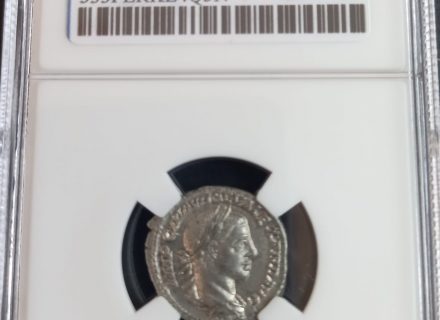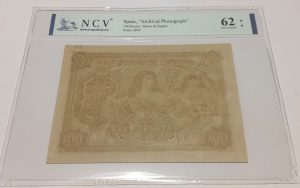
Have you ever heard about test and commemorative bills and coins? These shiny treasures are a hot topic among collectors. Want to know more about them?
Test bills (or banknotes) and coins —also referred to as test notes, test money, or funny money— have become the target of many collectors. Their designs are fantastic, different, and unique. But what is proof money issued for? As the name suggests, they are intended to test a design in order to:
- Test the proper functioning of ATMs.
- Test the performance of new printing techniques that are continually being renewed and improved.
- Test the durability of new materials, such as polymer
- Test security measures (an ongoing research field).
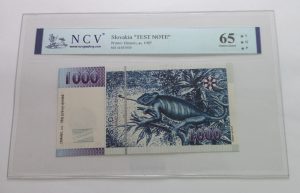 As you can figure out, all these tests involve different factors and concerns; therefore, the issue of this money can be carried out by all the companies involved in its production: engravers, printers, designers, manufacturers of ATMs and central banks, ink producers… All these sectors can work together to test different updates in the same test run. The first test banknotes on record date back to the beginning of the 19th century.
As you can figure out, all these tests involve different factors and concerns; therefore, the issue of this money can be carried out by all the companies involved in its production: engravers, printers, designers, manufacturers of ATMs and central banks, ink producers… All these sectors can work together to test different updates in the same test run. The first test banknotes on record date back to the beginning of the 19th century.
Proof money (coins or banknotes) is usually classified in numismatic catalogs with the letters PR or PF (P from Proof).
Other uses of test money
Beyond the genuine purpose of testing the reliability and strength of new material, design, or technology, the potential of test banknotes today goes far beyond practical reasons. These banknotes have been seen as effective marketing and promotional items using a design to prove a company’s expertise. And, when you think about it, as an advertising campaign, it is unparalleled.
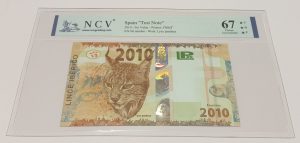
Thus, test banknotes have become a major target for collectors, leading to a proliferation of their uses. In this sense, issues of coins and banknotes are used to commemorate collectors’ conventions, special editions of films, television series, music groups, sporting events, etc… They will always be collector’s items only and will not enter into circulation as money in the strict sense of the word. Their editions are limited, and, as a souvenir, they can be packaged in neat presentation boxes.
This type of commemorative money can be acquired as a souvenir of an event or place we have visited, as a trim element since their designs are memorable, as a gift —something increasingly widespread not only among individuals but also among companies—, or as an investment, relying on its revaluation over time.
Special mention should be made of the case of euro coins, usually minted in different metals, face value, and designs from those intended for circulation. They must differ significantly from the latter in at least these features: color, weight, and diameter. Besides, they don’t have a fine milled edge with lettering, also known as ‘Spanish flower’ edge.
However, despite the proliferation of all these alternative uses of money created not for circulation but specifically for collecting, proof specimens remain by far the most coveted. And within test money, the following are particularly sought after:
- Prototypes: really reduced series as they are first proofs.
- Series identified with exotic locations.
- Special issues.
- Rare cases: euros minted in 1999, from Catalonia, worth 3€. A proof euro coin or bill is a very sought-after jewel.
Commemorative coins and banknotes
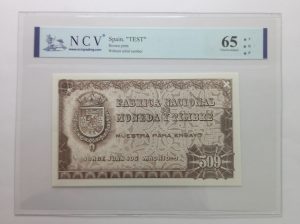
Test or collecting coins or banknotes (not intended for circulation) must not be confused with the commemorative, issued in a specific thematic and limited fashion to commemorate some event or personality. In the Eurozone, this is only done with 2 euro coins under certain conditions, such as having a national side different from the usual one —although keeping the common side. Each Member State can only issue two commemorative coins annually —at most three if it is a joint Eurozone issue.
The first commemorative euro coin issued in Spain was created to celebrate the 4th centenary of the first edition of Don Quixote, of which 8 million were issued. The last one was for the fifth centenary of the circumnavigation of the world (1 million).
Outside the Eurozone, we can also find commemorative money. For example, Qatar released 6 million commemorative polymer bills during the World Cup, which were highly sought after by fans as souvenirs
So both test and commemorative money are targets for collectors. Are they part of your collection?
Sources:
http://curiosidadesnumismaticas.blogspot.com/2015/10/billetes-de-prueba.html?m=1
https://www.bde.es/bde/es/areas/billemone/Publico_general/Monedas_de_euro/conmemorativas/Monedas_conmemo_8c1abaff11bc821.html
http://currency_den.tripod.com/testnotes/printer.pdfproof

